BlueAnt Soundblade review
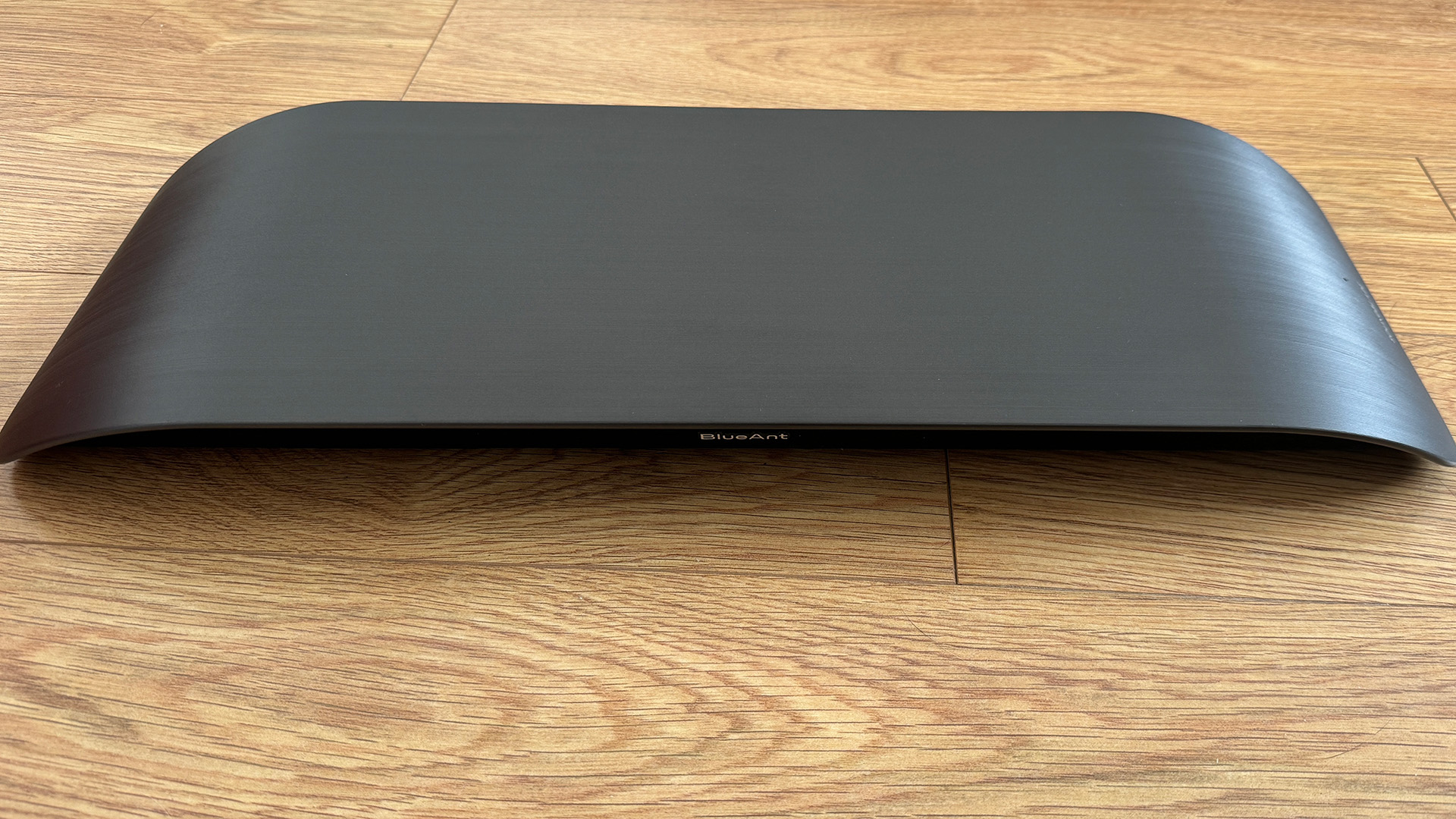
Powerful playback bolstered by a solid internal subwoofer.
The BlueAnt Soundblade is unlike your traditional gaming soundbar or stereo speaker setup that you'll have at your desk. That's immediately apparent in its physical design, which ditches a standard box/bar approach for rounded, tapered edges, complete with a built-in subwoofer delivering powerful bass without taking up a ton of space.
This company is behind high-end home cinema soundbars, such as the XT100 and the XT120, which sit under a television when wall-mounted or atop a media stand. But the Soundblade is completely different. On the technical front, the 120 W of peak power easily matches even the best speakers for PC gaming such as the Logitech G560 Lightsync and Creative Sound Blaster Katana V2 Soundbar in a much smaller all-in-one package.
Regarding subwoofers, the built-in 80 mm neodymium sub punches above its weight, delivering a strong bass presence when gaming, listening to music, and media playback. It doesn't quite match up to the dedicated woofer you'll find on the Razer Leviathan V2 and its predecessor, given the Soundblade's subwoofer size and compact footprint, but the results are definitely comparable.
Unlike Razer's latest gaming soundbar, the Soundblade impresses with a wealth of connectivity options including 3.5 mm jack, USB-C, USB-A, and Bluetooth 3.5. That means you can hardwire into your PC gaming setup or go completely wireless.
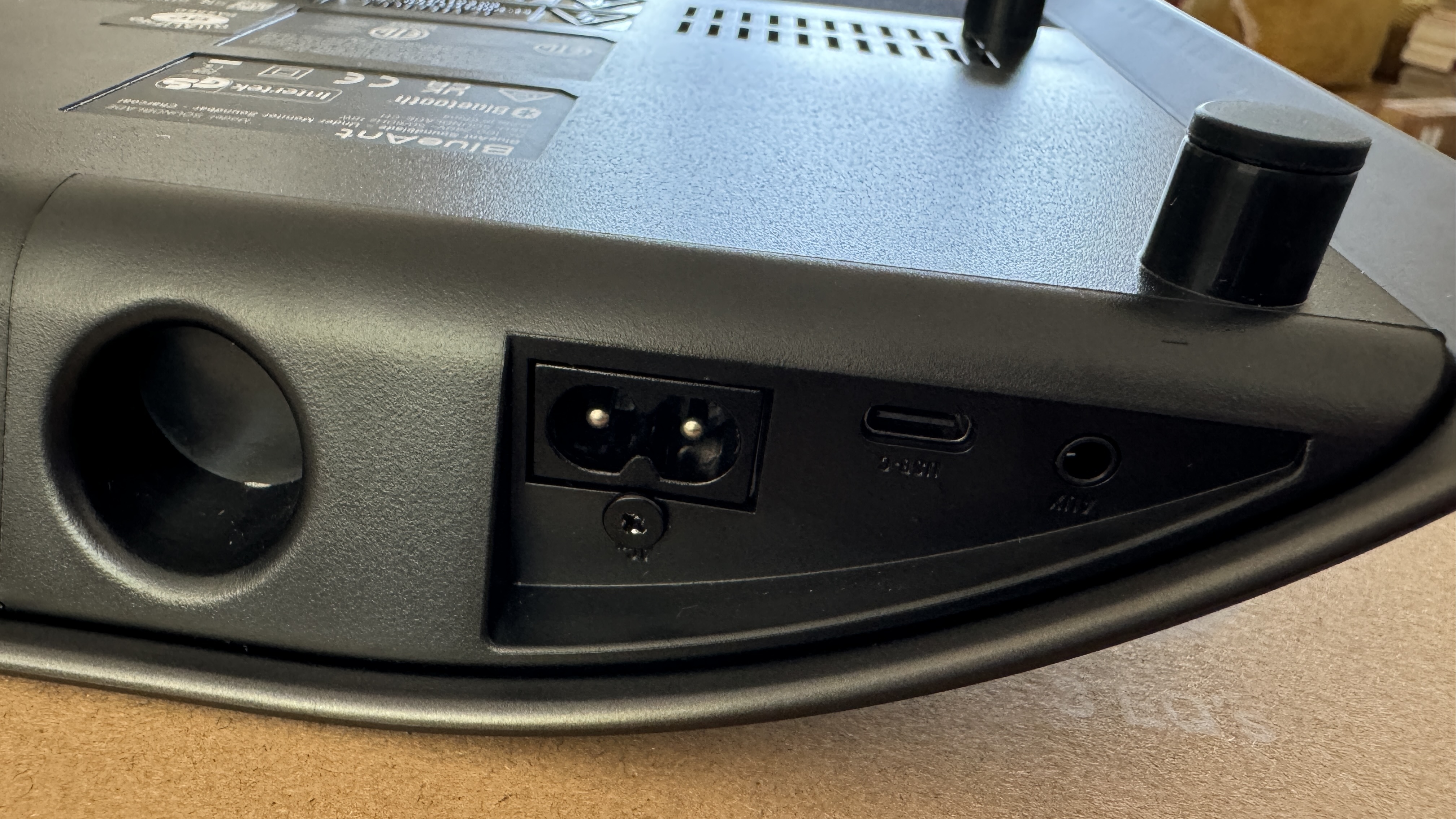
Power output: 120 watts peak power
Sound configuration: 2.1 channel sound
Subwoofer: 1 x Built-in 80 mm neodymium subwoofer
Drivers: 2 x Full range dual voice coil, dual Neodymium magnet drivers
Power source: AC Power
Size: 584 x 218 x 54 mm/ 23 x 8.58 x 2.13 in
Weight: 1.7 kg/ 3.75 pounds
Connectivity options: USB-C, Bluetooth 5.3 & 3.5mm
Price: $200 / £200 / AU$399
In my testing, I primarily switched between USB-C for the best wired-in experience and Bluetooth, both of which were near-identical to my ear, so the versatility can be praised here. You are, unfortunately, missing out on optical though, so if you're hoping for that connection then you'll want to consider an alternative.
What's pleasing is the range of colors that the BlueAnt Soundblade comes in which could add some variation to your gaming setup. My review unit is the Charcoal (black) model but you can also get the unit in Blue, Green, Pink, and White as well. All are available with an MSRP of $200 / £200 / AU$399, but you may find them slightly discounted from major retailers such as Amazon if you don't want to buy directly from the retailer.
The depth of audio here is solid as far as 2.1 channel sound goes. You're missing out on the true surround sound 5.1 options which make use of five internal speakers for encompassing audio. However, as you're sat so close to the Soundblade, meaning a foot away at best, it doesn't really matter in this regard. This extends to the included remote. This allows me to swap between the three dedicated EQ modes tailored towards gaming, music, and movies respectively. You'll want to keep things in "gaming" mode for the vast majority of uses; the audio sounds deeper, and the bass is more pronounced, too. Said remote feels a little redundant given the touch controls on the right-hand side; you can adjust volume levels as well as switch between input modes.
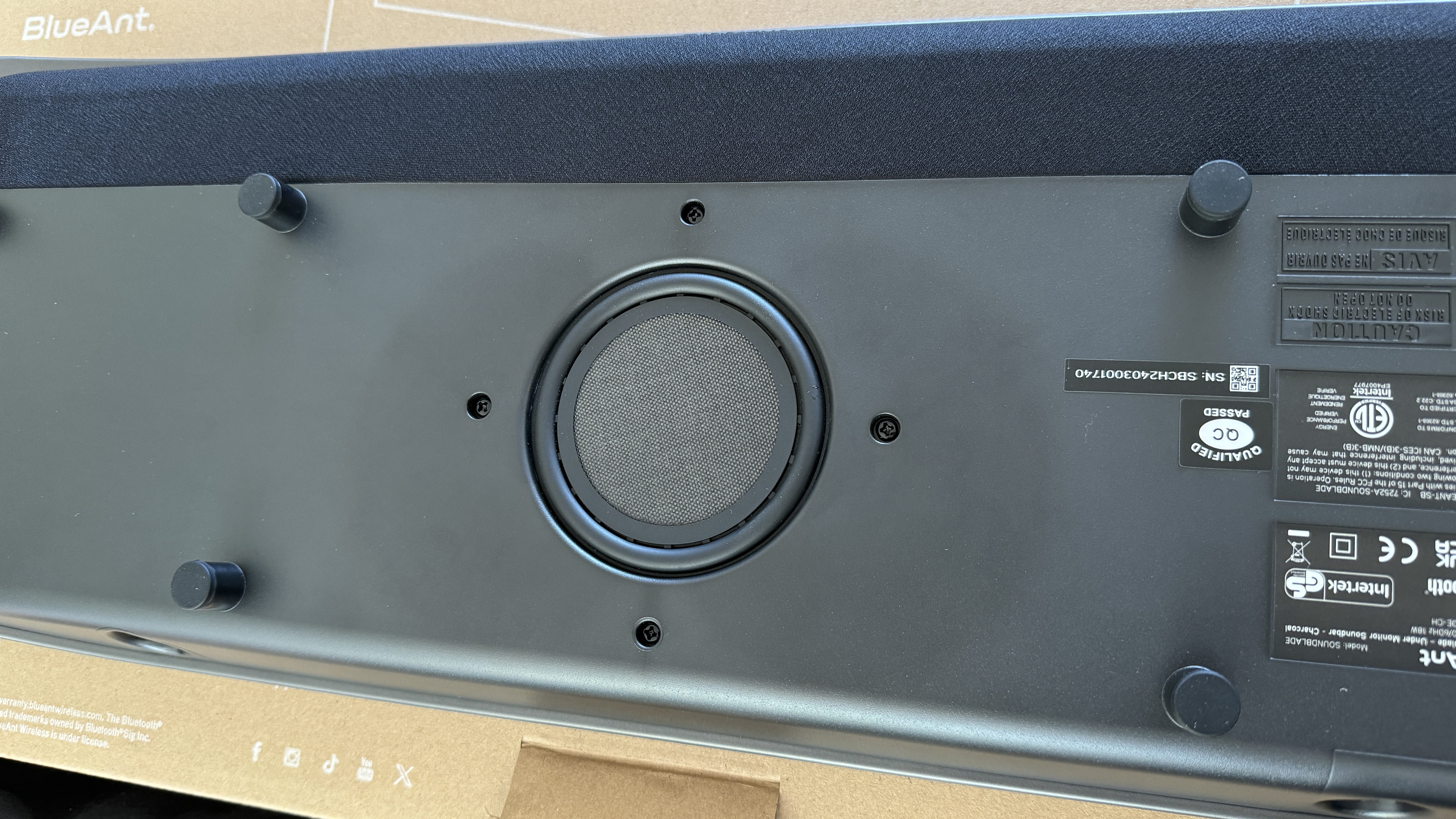
Despite the lack of any physical buttons, the options on the Soundblade work well and I didn't encounter any problems when adjusting volume, changing input, or dialling in an EQ setting. With that said, you're going to have the best results by keeping the soundbar at its highest volume setting, and then moderating loudness with your keyboard's dedicated media bar if you have one.
While the Soundblade makes an impression with its different physical profile, it also serves as something of a double-edged sword. In all the marketing material, this soundbar can be seen comfortably slotted underneath productivity machines, such as iMacs, and other all-in-ones which have a completely flat stand. I am using the Asus ROG Swift OLED PG34WCDM which happens to have one of the thicker and larger stands out there, owing to the panel's heavy 21:9 display.
Because of this, the Soundblade doesn't sit flush under my gaming monitor, instead, it's angled upwards against the stand. Yes, it's under the monitor, but it isn't flat. That said, it does take up far less space than the previous soundbars and speakers I have used such as the Razer Leviathan and the Edifer G2000 with vastly improved audio performance to boot. Ultimately, your mileage is going to vary here; if your display has a small stand, or you're using a dedicated monitor arm on your gaming desk then you likely won't have this issue, but it's something to be aware of before considering.
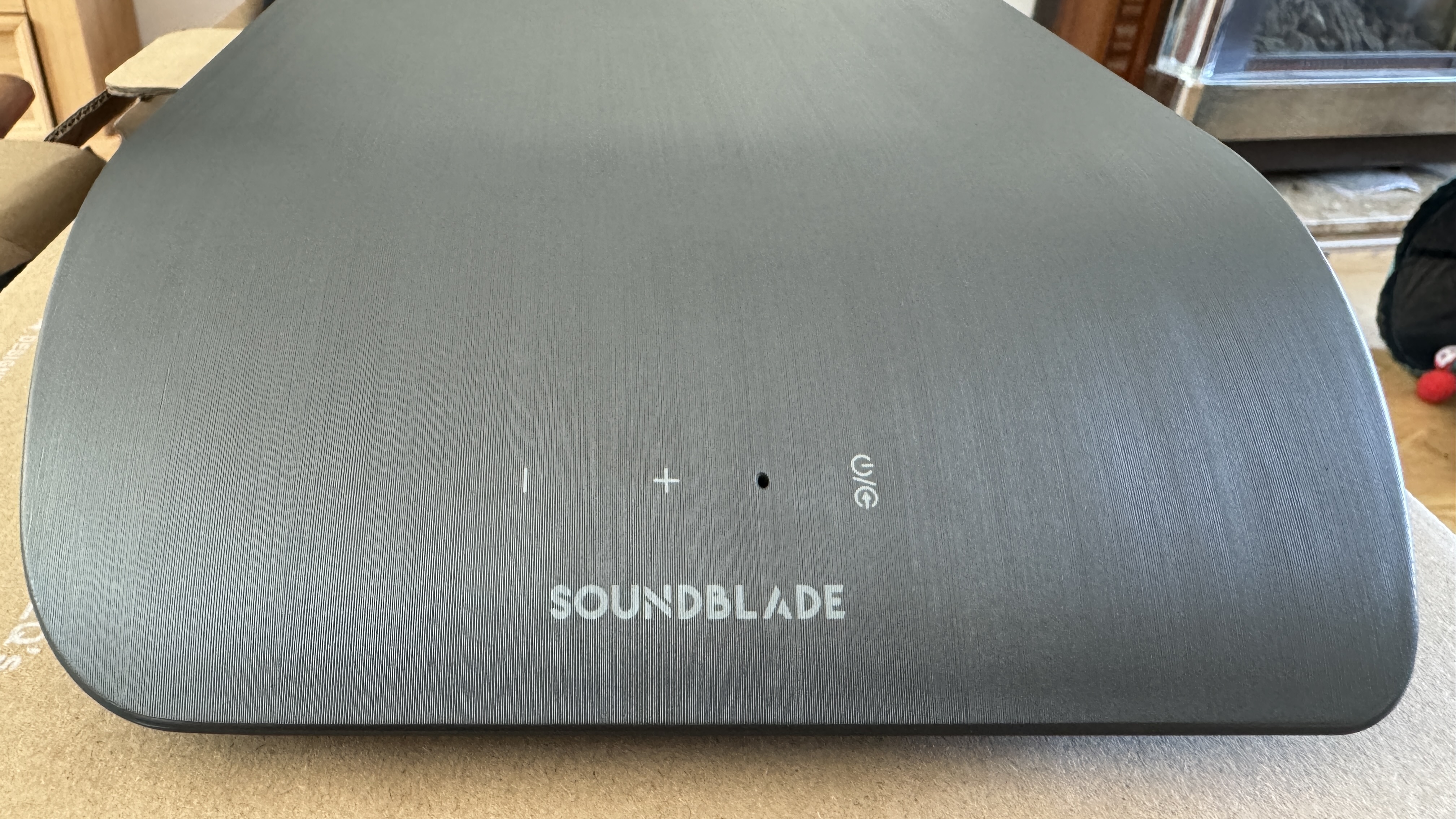
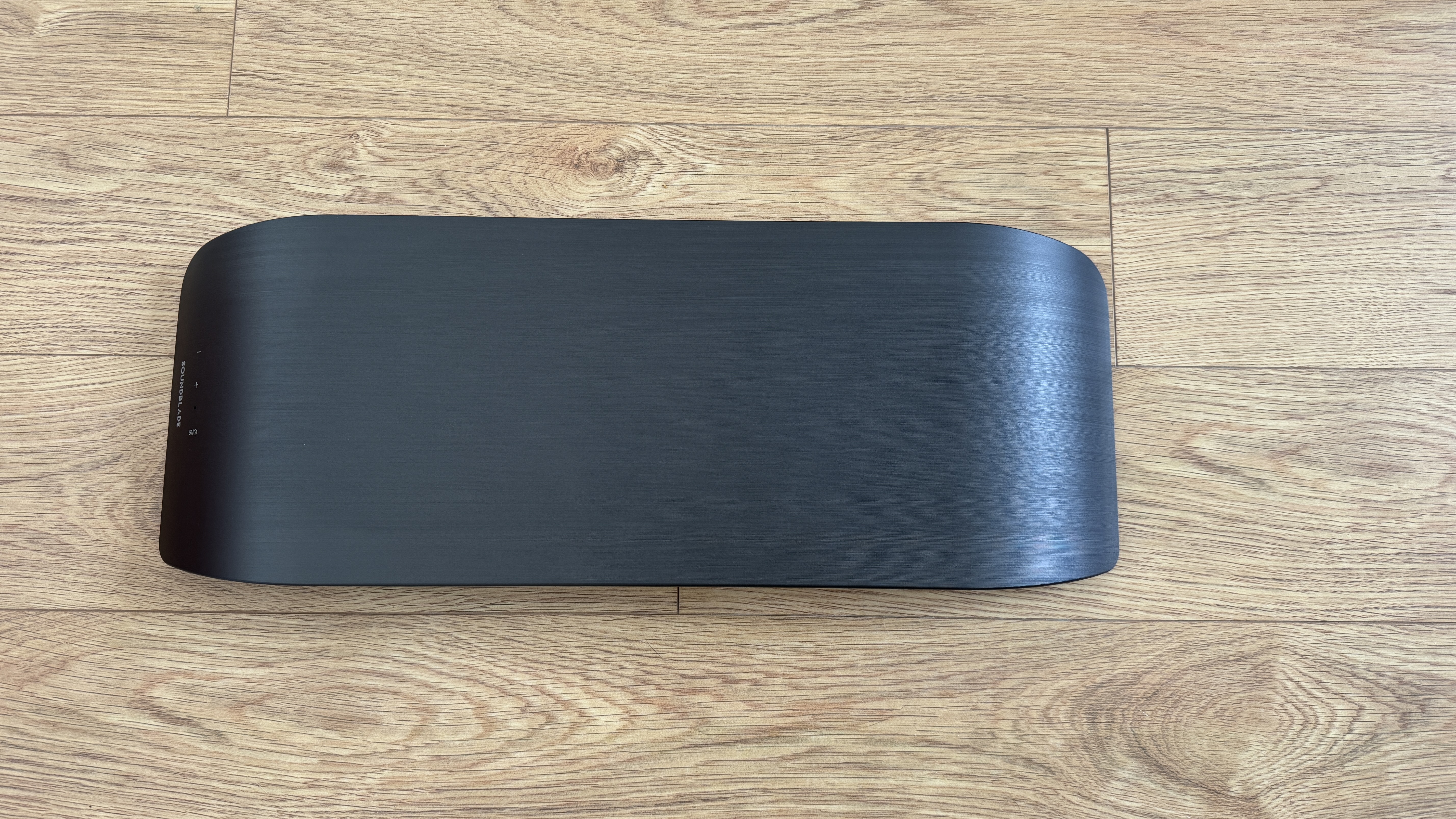
✅ You want a versatile low-profile soundbar for your setup: The BlueAnt Soundblade combines powerful performance with an intuitive design that packs a punch despite its sleek and small footprint. You also have a range of connectivity options to suit your uses, too.
❌ You want the best value for money: The Soundblade is far from the most expensive soundbar on the market, however, at $200 / £200, there are cheaper options for gamers in more traditional form factors.
Throughout my testing with the Soundblade, I went through a myriad of different of different music genres to fully test its chops. Naturally, owing to the included subwoofer, it was primed to blast some seriously heavy metal such as Imperial Triumphant's Metrovertigo, Gaerea's World Ablaze, and Blood Red Throne's Split Tongue Sermon. The drums and bass presence in all three tracks sounded as intended, with a thunderous roar pelting out without breaking a sweat.
The nuances in audio are appreciated when gaming even more so. It was most evident when blasting demons in Doom Eternal, Mick Gordon's ripping soundtrack standing out distinctively against the whirling of chainsaws, barrage of bullets, and heft of heavy boots. It's compounded in open-world titles such as Assassin's Creed Valhalla as well. Yes, the sword-on-sword violence is front and centre in the mix, but there's an equally clear distinction of ambient noise in the distance as well.
All in all, the BlueAnt Soundblade provides a satisfying alternative to a traditional soundbar and stereo speaker setup with a reduced footprint on your desk. Due to its design it may not play nice underneath your monitor, but if you're looking to free up space and benefit from a strong audio profile there's a lot to like here.
